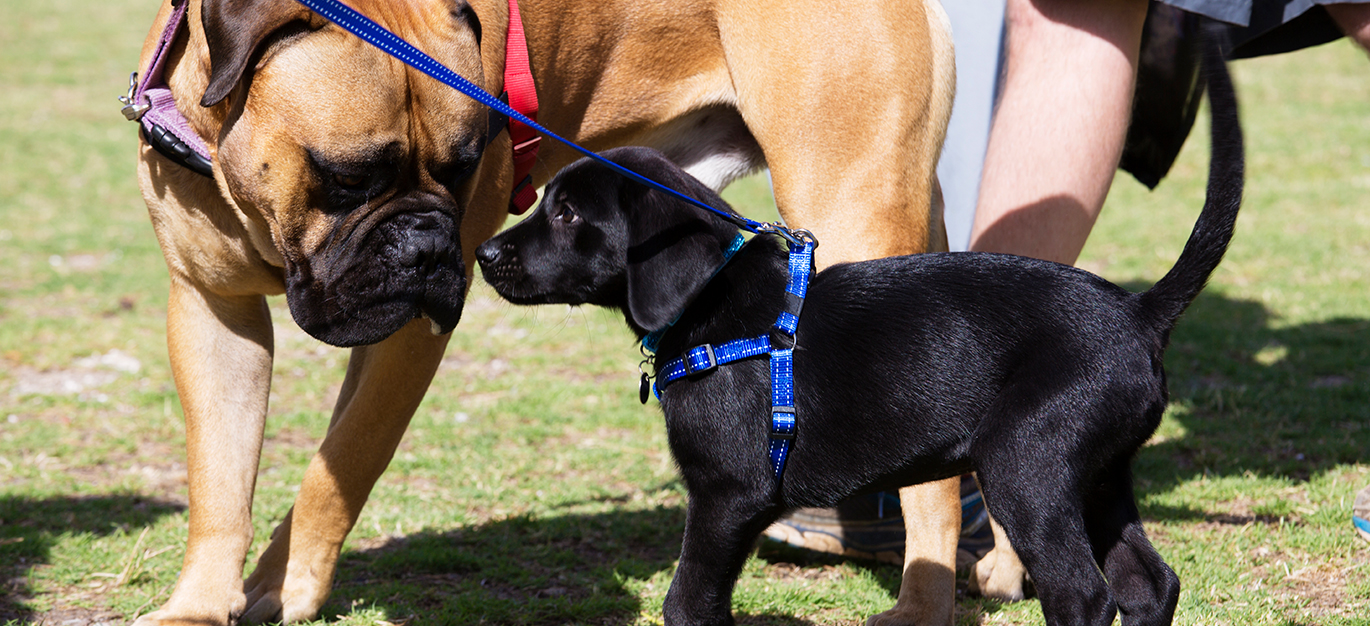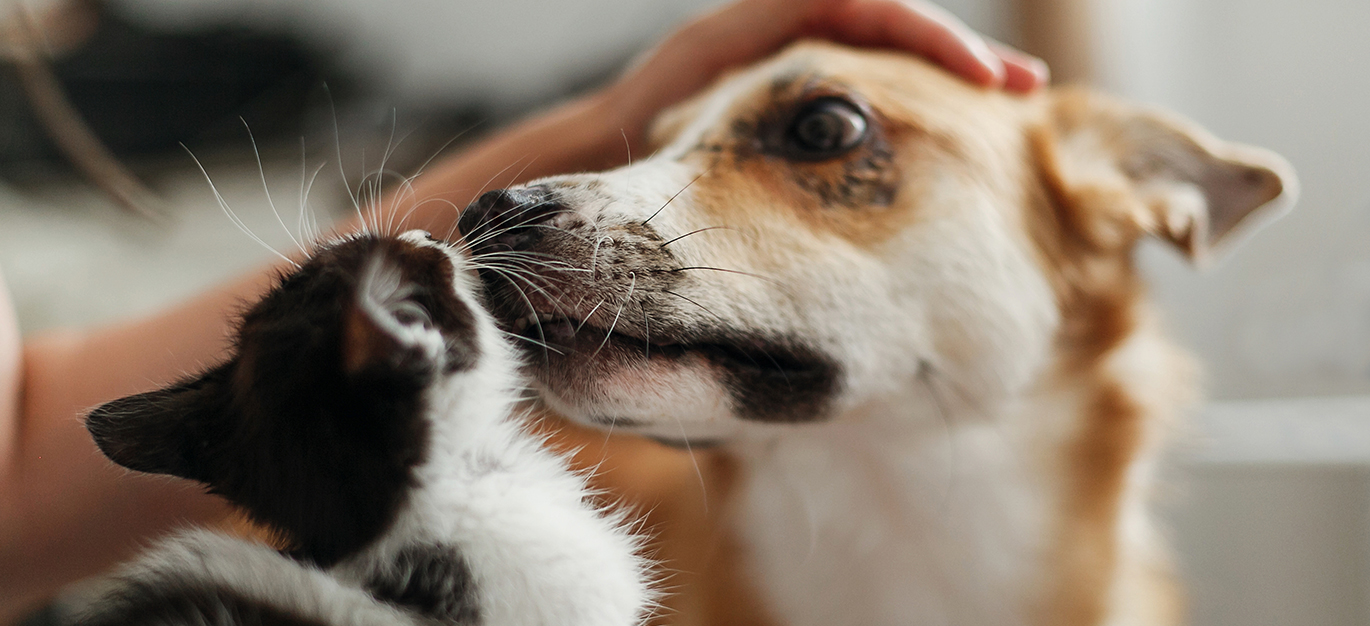Sorry about that! It looks like we’ve run out of stock for that product. Sign in below and we’ll send you an update when it’s back in stock.
20% DISCOUNT on your first order! Use the discount code "IMNEW20" at checkout!
Introducing a new pet to your household can be an exciting yet challenging experience. Whether it’s a new puppy, kitten, or an older rescue, ensuring a smooth introduction is vital for their wellbeing as well as the happiness of your existing pets. Poor introductions can lead to stress-related behaviours like aggression, anxiety, or withdrawal, which can cause tension and even injury between pets.
A proper introduction allows the new and existing pets to adjust at their own pace. Gradually building trust between them helps create a harmonious environment, preventing unnecessary stress for all involved. Diet also plays a significant role here – a balanced, raw food diet can help keep pets calm, promoting better health during this period of adjustment.
When bringing a new pet home, it’s essential to keep them contained in a designated area at first. For puppies and kittens, crate training can be an effective way to ensure they feel safe in their new surroundings. Choose a crate that is appropriately sized – large enough for them to stand up, turn around, and lie down, but not too spacious that they feel lost.
Make the crate a positive space by introducing comfortable bedding and toys, and gradually increasing the amount of time they spend in it. This method also helps avoid immediate face-to-face meetings with existing pets, which can lead to territorial behaviour. Allow your new pet to become familiar with the smells of the other pets in the house by using items like blankets or toys from each animal.
When it’s time for the first meeting, choosing a neutral, shared space for introductions is key. For dogs, this can be a quiet area in a park, where neither dog feels the need to defend their territory. For cats and dogs, a controlled indoor space works best, where both animals feel secure but aren’t confined in a way that increases anxiety.
Keep initial interactions brief and positive. If you notice signs of aggression or fear – growling, hissing, or raised fur – separate the animals and give them time to calm down. You can gradually increase the length of these sessions as both pets become more comfortable with each other.

Long-Term Tips for Maintaining Harmony
Once the initial introductions have gone well, gradually increasing the time pets spend together under supervision is important. Keep play sessions short, positive, and under control to avoid unnecessary conflict. Use praise and treats to reward good behaviour, encouraging calm and friendly interactions.
Over time, your pets will learn to tolerate, and eventually bond with each other. Be mindful of their body language – if they appear uncomfortable or agitated, step in and separate them for a while. Always aim to end interactions on a positive note to reinforce good behaviour.

It's natural for both your new and existing pets to feel some stress during this transition, but excessive stress or anxiety can lead to long-term behavioural problems. Keep an eye on the following signs in both pets:
If you notice any of these signs, it may be worth taking a step back in the introduction process. Calming products like pheromone diffusers or anxiety wraps can help create a more peaceful environment. Additionally, maintaining a stable feeding routine, especially with a raw food diet, can keep their digestion and energy levels balanced, promoting overall calmness.
Introducing a raw food diet for both new and existing pets can have a multitude of benefits during the transition phase. Raw food diets are packed with high-quality proteins and nutrients, supporting strong immune systems and healthy energy levels. For puppies or kittens, raw food provides the right balance of nutrients for growth, without the artificial additives found in processed pet food that can sometimes lead to hyperactive behaviour.
Feeding a raw diet to both pets can also reduce instances of food-related stress. Fresh, nutritious meals tend to keep pets satisfied for longer, preventing food aggression and reducing the need for scavenging or begging. When introducing a new pet to raw food, do it gradually to avoid digestive upsets, and ensure that each pet has its own designated feeding area.
The best way to introduce a puppy to an older dog is by starting in a neutral area, such as a park or a friend’s garden. Keep both dogs on leads and allow them to sniff each other from a safe distance, watching for signs of discomfort or aggression. If both dogs remain calm, you can gradually allow them to interact more freely. Always supervise early interactions, and give both dogs plenty of positive reinforcement in the form of treats or praise for good behaviour.
The adjustment period can vary depending on the temperament of the pets involved. For some, the process can take just a few days, while for others it may take several weeks or even months. Dogs generally adapt more quickly than cats, but patience is key in all cases. It's important not to rush the process, and to allow each pet to adjust at their own pace.
Yes, puppies can be fed a raw food diet from the start, but it's important to introduce it slowly to avoid any digestive upsets. Begin by mixing small amounts of raw food with their current diet, gradually increasing the ratio over the course of a week or two. Make sure the raw food you’re offering is specifically formulated for puppies to ensure they are receiving the right balance of nutrients for growth and development.
In the early days of your new pet’s arrival, it’s best to give each animal its own designated sleeping area. This allows them to feel safe and secure in their own space. Over time, if they become more comfortable with each other, they may choose to sleep near one another, but don't force this. Each pet should have their own space to retreat to whenever they need some alone time.
Pets, particularly dogs, thrive on routine. When introducing a new pet, maintaining a consistent daily routine for both pets can help reduce stress. This includes regular feeding times, walks, play sessions, and downtime. Introducing a new pet can disrupt the existing routine, so try to incorporate the new pet into the established structure as smoothly as possible, adjusting schedules slightly if necessary but maintaining the overall flow of the day.
Introducing a new pet into your home can be a rewarding experience, but it requires patience, planning, and a thoughtful approach. By following these tips, ensuring your pets are properly introduced in a calm and controlled manner, and supporting their health with a balanced diet, such as a raw food diet, you can foster a harmonious environment for both new and existing pets. Remember, every pet is different – taking the time to adjust to each other's presence will pay off in the long run as they become lifelong companions.
If you're looking for expert advice or recommendations on introducing new pets or transitioning them to a raw food diet, feel free to contact our pet care specialists or visit our online store for the best raw food options for your pets.